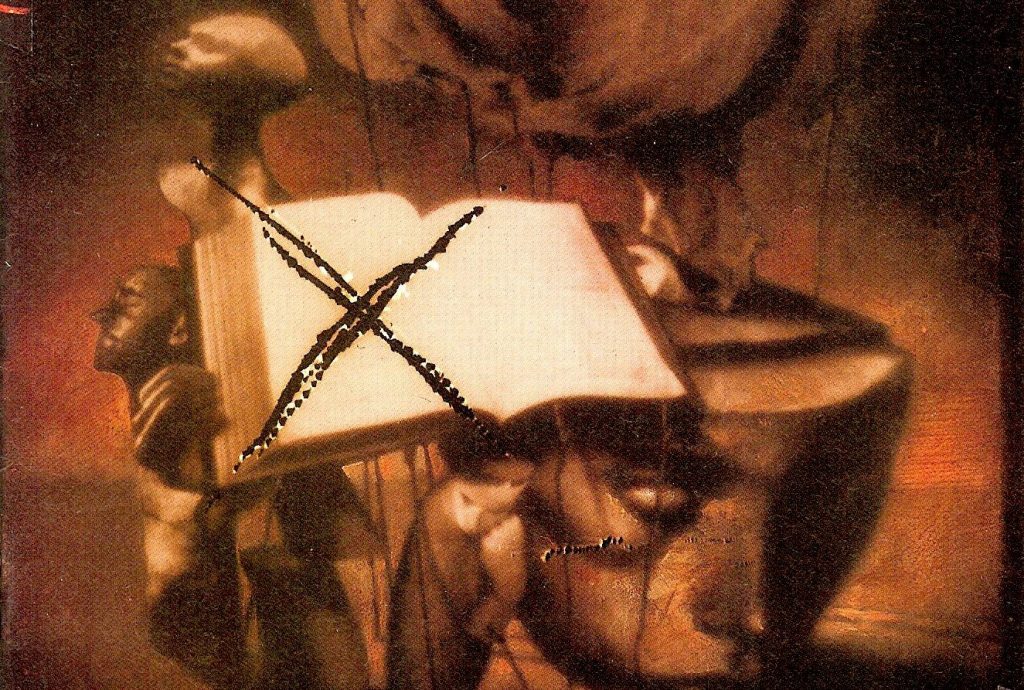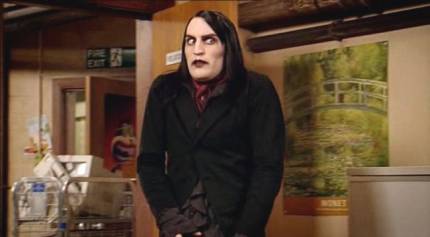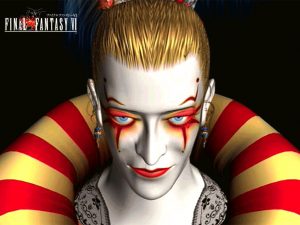
Sandman sets things right in issues #21-23. We’ve got six Endless with no waiting, plus epic confrontation, epic conversation, and epic procrastination!
This podcast contains spoilers for American Gods.
Show Notes
1:20 – We previously saw Kelley Jones’ work in Sandman issues 17 and 18, where we learned he can draw really good cats.
2:50 – This is probably the funniest of many mostly irrelevant scenes in the Coen brothers’ period Hollywood parody Hail Caesar!
3:29 – Put a pin in John Keats for the moment…
3:35 – Eric added this “in which” summary; Gaiman did not write one for every individual page.
5:58 – The Fates (just one aspect of the Hecatae, they have previously mentioned, and seemingly the one most akin to Destiny) measured out the thread of each person’s life – a cut end represents that person’s death.
6:06 – This issue’s original colors by Steve Oliff remain intact in the latest edition of the trades; only the first 18 issues were recolored.
8:12 – The Crimson Pirate is a 1952 adventure film starring Burt Lancaster, and is also the X-Man Nightcrawler’s favorite movie.
9:57 – This issue is the first-ever appearance for Delirium. Dream previously mentioned her name in conversation with Desire in Sandman #16. We met the twins, Despair and Desire, in the Doll’s House story arc, and briefly encountered Destiny in Sandman #7 when he felt some trepidation over Doctor Destiny’s warping reality.
13:06 – That’s presumably a reference to Samuel Taylor Coleridge. Interestingly, one of Coleridge’s most famous poems, Kubla Khan, purports to be an accurate recounting of a dream, its sudden end the result of an unscheduled interruption by a visitor causing Coleridge to forget the remainder of his inspiration. Perhaps Dream took issue with Coleridge’s claim, or the accuracy of his recitation?
17:44 – By Greece, Desire means ancient Greece – Calliope was the Greek muse of epic poetry.
18:46 – For more on Nada, check out her first appearance in Sandman #4, and her full backstory in Sandman #9.
19:46 – This could just be a throwaway line, but keep it in mind when we cover the next story arc, A Game of You.
22:32 – When we first met Desire in Sandman #10, the narration paused to consider “him” or “her” before settling on “it,” adding that “Desire has never been satisfied with just one sex. Or just one of anything…”
33:22 – Before Matthew died and became a raven, he was a human being, and a Swamp Thing character. The last time our humble podcast saw him alive, in Swamp Thing #76, he was in a coma from which he would never recover, the result of a drunk driving accident followed by demonic possession.
34:00 – It’s The Haunted Palace, and although it closed with an epigram from the poem of the same name by Poe, the film’s writer, Charles Beaumont, didn’t even change the character names to disguise the plot of Lovecraft’s novel. The Haunted Palace was the sixth of eight Poe-inspired films directed by Roger Corman between 1960 and 1965; The Raven – written by I Am Legend and “Nightmare at 20,000 Feet” scribe Richard Matheson – was the fifth.
34:35 – I would like to apologize to everybody, but most of all to Michael Caine.
35:51 – For comparison, The IT Crowd’s Richmond:

36:02 – Morpheus’ throne also features a bright yellow embroidered sun pillow, lying at the foot of the throne as if discarded. Perhaps he was in a hurry to make a suitably grim impression.
38:14 – That was a reference to Monty Python and the Holy Grail.
38:27 – Working-class Jack O’Lantern Mervyn Pumpkinhead will have a larger role in this series in the future – we first met him in Sandman #5, when Morpheus hitched a ride in a mortal’s dream of having sex on a bus. Merv was driving the bus. Someone’s gotta do it.
42:54 – The “mark of Cain” story originates from the book of Genesis. Lucifer is quoting Genesis 4:15-16.
43:13 – This usage originated outside the Bible as an English-language pun, apparently at the hands of Jonathan Swift, who holds the first known example in his Complete Collection of Polite and Ingenious Conversation. In Hebrew, “Nod” translates as “to wander.”
46:05 – Gaiman used a similar phrase in his novel Anansi Boys with regard to Fat Charlie Nancy, the son of Anansi, who retained the moniker “Fat Charlie” into adulthood despite no longer being fat. “It was, he knew, irrationally, because his father had given him the nickname, and when his father gave things names, they stuck.”
46:50 – We met Hob, and witnessed his 500-year friendship with Morpheus, in Sandman #13, “Men of Good Fortune.” In 1889, Morpheus was offended by the suggestion that he had or needed human friends; in the last century he has clearly changed his mind.
48:55 – Etrigan conquered Hell in The Demon (vol. 3) #6-7, briefly ruling with his own triumvirate including his mother and Abaddon. That was a bare one month before this issue.
49:48 – We’ll meet the First of the Fallen in Hellblazer #42. As the events immediately to come should make clear, he’s not Lucifer.
57:32 – That was a reference to Gundam Wing.
58:34 – I’m referring here to Kefka, the nihilistic psycho clown sorcerer from Final Fantasy VI.

1:02:11 – Morpheus rankles at Lucifer’s suggestion that he’s changed in ten billion years, another nod to the series’ recurring theme of whether a person can change.
1:04:42 – We eventually identified the story Eric was thinking of, but it’s something both recent and good, and revealing its name would constitute a pretty significant spoiler.
1:06:35 – We are, of course, referring to The Charlie Daniels Band’s 1979 single “The Devil Went Down to Georgia.”
1:15:22 – For me, one of the keys to a comic story that maintains an appropriate pace – and one of the reasons I’m a fan of late Bronze Age, pre-decompression comics – is that even in an ongoing saga, each issue should have its own discrete purpose. For a lovely example of how to do this right, check out the Born Again story arc in Daredevil.
1:17:06 – Mazikeen is disfigured on her left side, the viewer’s right. So is Batman baddie Harvey “Douchebag Harvey” Dent, so they’d make out pretty-side-to-ugly-side.
1:17:27 – Sorry, everybody. It’s “The Fear Machine.” I made that mistake in our last Hellblazer episode too.
1:18:19 – Okay, remember our old pal John Keats? “To Autumn” opens:
Season of mists and mellow fruitfulness
Close bosom-friend of the maturing sun
Conspiring with him how to load and bless
With fruit the vines that round the thatch-eves run;
To bend with apples the moss’d cottage-trees
And fill all fruit with ripeness to the core;
Autumn, the season, is personified as a character who personally delivers a bounteous harvest unto every plant. In this story arc, Lucifer delivers a bounty to Morpheus, a gift he doesn’t really want that will cause him a lot of trouble. Perhaps that’s the connection Gaiman was making, or perhaps it’s just a generalized reference to anthropomorphic personifications, this story arc being concerned with contrasting Lucifer and Dream and how they address their responsibilities as facets of the universe.
Podcast: Play in new window | Download
Subscribe: RSS